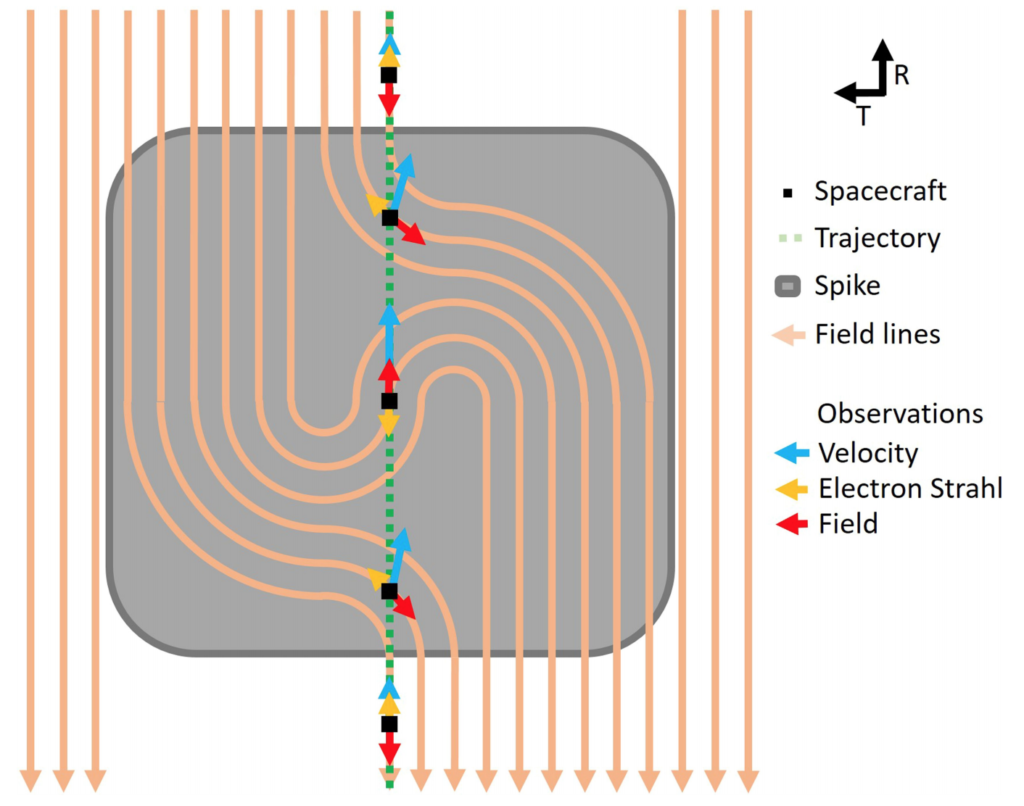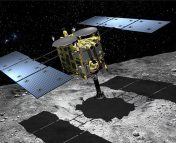Title: Alfvénic velocity spikes and rotational flows in the near-Sun solar wind
Authors: J.C. Kasper, S.D. Bale, et. al.
First Author’s Institution: Climate and Space Sciences and Engineering, University of Michigan; Smithsonian Astrophysical Observatory
Status: Published in Nature [closed access]
The Sun isn’t exactly a hospitable place for a satellite. It’s extremely hot, surrounded by a strong flow of charged particles called the solar wind. But recently, NASA launched a new mission called the Parker Solar Probe, designed to dive closer to the Sun than ever before. Its goal is to understand the plasma, magnetic fields, and charged particles near the surface of the Sun, specifically in the solar wind and the tenuous outer layer known as the corona. By learning about these energetic flows of particles around the Sun, we can better understand how the Sun gives off energy, and why (possibly hazardous to Earth) events like solar flares and coronal mass ejections occur.
Now that the Parker Solar Probe (PSP) has completed its first two close passages of the Sun (out of 24 total planned!), the mission team has released their first results. We’ll take a look at some of these findings in today’s paper.
What’s going on near the Sun?
Previous missions, such as Explorer 10, confirmed that there is a supersonic solar wind. We also know that the plasma around the Sun is somehow accelerated as it leaves the corona, transporting energy into that solar wind – but, we want to know exactly how that happens, and now we can do so by looking right at the source of the wind. As it swung close to the Sun, the PSP traveled through the wind, gathering information on the variation of density of particles, velocity of the wind, and temperature.
One puzzling feature it found is repeated spikes in the wind’s velocity, as shown in Figure 1. In some of these high speed regions the spacecraft passed through, the magnetic fields seemed to be bent into an S-shape, as shown in Figure 2. More observations are still needed to figure out why these velocity spikes happen.

The probe also observed a net rotational flow around the Sun, which is the first in situ observation of that kind of particle flow. The magnetic field in the corona should force plasma to rotate as the Sun spins, so we would expect to see this. But, the velocities of the rotational flow that they observed are way higher than expected! Stars are known to lose angular momentum through their stellar winds, so these higher velocities might mean that stars lose angular momentum faster than expected. This would have serious implications for how stars spin down as they age (and therefore, how we use spin to date other stars outside our solar system). We’d need to learn more about how this flow is created so that we can understand what will happen to the Sun as it gets older, and therefore what will happen to other Sun-like stars as they age, too. Future PSP orbits will characterize how important these rotational flows are, and generally better describe the plasma (turbulence, velocity spikes, temperature variations, particle velocities, and more).

Other new results from the PSP include a possible solution to the long-standing coronal heating problem (how is the Sun’s corona so hot?); observations suggest that Alfven waves, a type of disturbance that happens in magnetized plasma, are the culprit. And this is all just the start – this probe is planned to keep orbiting and observing until 2025, diving closer and closer within 10 Solar Radii, so there is ample time and opportunity left to unravel the outstanding mysteries of the Sun!




